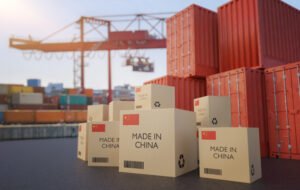China’s dominant role in global manufacturing, underpinned by its extensive supply chain and efficient production methods, necessitates a strategic focus on protecting molds and toolings, pivotal in materializing product designs on a large scale. Given the substantial investment in these assets, businesses must prioritize their protection to maintain their competitive edge and financial health. In this context, the role of China Mold Protection Agreements becomes paramount, especially for foreign companies operating within the distinct Chinese legal system.
Table of Contents
ToggleEssentials of China Mold Protection Agreements
China Mold Protection Agreements are specialized legal contracts designed to protect molds and toolings from misuse, infringement, or unauthorized competition within the Chinese market. To be effective, these agreements should encompass several key components:
1. Definition of Scope and Usage
Clearly define the use of molds, including where, how, and by whom they can be used. This specificity helps prevent unauthorized production or replication of products.
2. Ownership and Control
The agreement must unequivocally state who owns the molds and toolings. It should include provisions for control over their use, maintenance, and storage, ensuring that the owner retains full authority over their assets.
3. NNN Clauses
Non-Use, Non-Disclosure, and Non-Circumvention clauses are critical. They ensure that the manufacturing partner cannot use the molds for any purpose other than what is specified, cannot disclose any information about the molds to third parties, and cannot bypass the owner to produce similar products using similar toolings.
4. Maintenance and Quality Control
Details regarding the maintenance of the molds, who is responsible, and the quality standards to be maintained are vital. This ensures the longevity and proper functioning of the molds.
5. Duration and Termination
The agreement should specify the duration of the contract and the conditions under which it can be terminated. It should also outline the procedures for mold return or destruction upon contract termination.
6. Legal Compliance and Dispute Resolution
Provisions for compliance with local and international laws are necessary. The agreement should also include a dispute resolution mechanism, specifying how conflicts will be resolved, preferably under the jurisdiction of Chinese law.
7. Intellectual Property Rights
Stipulations regarding the intellectual property of the designs and products produced using the molds need to be clear. This includes ensuring that the molds are not used to infringe upon any intellectual property rights.
The Importance of Tailoring Agreements
Given the complexities of the Chinese legal system and business practices, it is essential that Mold Protection Agreements are tailored to the specific context of the Chinese market. This includes drafting agreements in Chinese and ensuring they comply with local laws and business customs. The specificity and thoroughness of these agreements play a critical role in safeguarding a business’s investments in China.
Conclusion
In summary, China Mold Protection Agreements are an indispensable tool for businesses operating in China’s manufacturing sector. By meticulously outlining the terms of use, ownership, maintenance, and legal compliance, these agreements provide a robust framework for protecting valuable molds and toolings. When crafted with precision and a deep understanding of Chinese law and business practices, they serve as a shield against unauthorized use and competition, ensuring the longevity and profitability of manufacturing ventures in China.
FAQs
- What are China Mold Protection Agreements? China Mold Protection Agreements are specialized contracts designed to safeguard molds and toolings in the manufacturing process within China. They are tailored to prevent unauthorized use, reproduction, or competition, ensuring that the owner’s intellectual and physical investments are secured.
- Why are China Mold Protection Agreements important for foreign businesses? These agreements are crucial for foreign businesses because they navigate the unique legal and business landscape of China, where standard international contracts might not be as effective. They offer a structured and enforceable way to protect investments in a highly competitive manufacturing environment.
- What key elements should be included in a China Mold Protection Agreement? Essential elements include clear definitions of scope and usage, ownership and control clauses, Non-Use, Non-Disclosure, and Non-Circumvention (NNN) clauses, maintenance and quality control guidelines, terms of duration and termination, legal compliance and dispute resolution mechanisms, and provisions for intellectual property rights.
- How do NNN clauses in these agreements protect mold owners? NNN clauses prevent the manufacturing partner from using the molds for any unauthorized purposes (Non-Use), sharing information about the molds with third parties (Non-Disclosure), and bypassing the owner to produce similar products (Non-Circumvention).
- What is the significance of including maintenance and quality control in the agreements? Including maintenance and quality control ensures that the molds are kept in optimal condition, which is crucial for producing high-quality products and prolonging the lifespan of the molds.
- Is it necessary to draft these agreements in Chinese? Yes, drafting the agreements in Chinese and ensuring they comply with local laws is crucial for their enforceability in China. This helps in mitigating misunderstandings and legal ambiguities.
- Can these agreements protect intellectual property rights? Absolutely. These agreements can include stipulations regarding the intellectual property of designs and products, ensuring that the molds are not used to infringe upon any intellectual property rights and securing the owner’s creative investments.
- What happens to the molds after the contract is terminated? The agreement should specify procedures for the return or destruction of molds upon termination of the contract, ensuring that the owner retains control over their assets post-contract.
- How does legal compliance and dispute resolution work in these agreements? The agreements should include clauses for compliance with both local and international laws, and specify mechanisms for resolving disputes, preferably under the jurisdiction of Chinese law, to ensure clarity and enforceability.
- Why is due diligence important when entering into a Mold Protection Agreement? Conducting due diligence on potential manufacturing partners helps in assessing their legal standing, business practices, and history with intellectual property rights, ensuring a secure and trustworthy business relationship.
Contact us if you need help with background investigation of Chinese companies, protecting patents, trademarks, verification of contracts to the law in China, or help with other legal challenges that you have in China.
If you require our assistance or have further questions about our services, please do not hesitate to contact our Customer Relationship Manager, Jan Erik Christensen, at janerik@ncbhub.com. We look forward to hearing from you and helping your business succeed in China.








